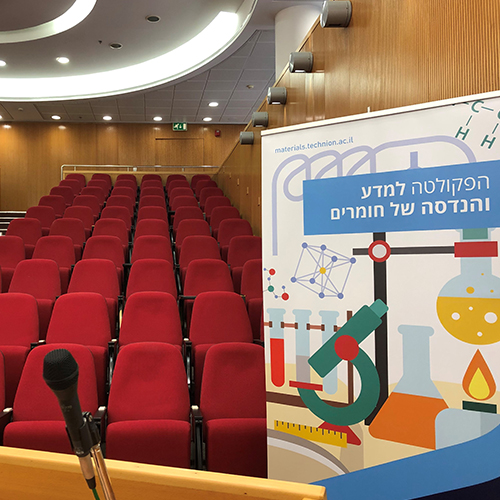
Ms. Maisam Nassar - M.Sc. Candidate
12/01/2025
אודיטוריום ע"ש דויד וואנג, בניין מידן, קומה 3
14:30
The ongoing pursuit of high-energy and high-power density batteries is driving the development of new strategies to enhance the performance of lithium-ion batteries (LIBs). LIBs are electrochemical systems, and their performance is heavily influenced by the components involved, including the electrolyte composition, active materials, separators, and, notably, the binders. The most commonly used binder in the industry is polyvinylidene fluoride (PVDF). However, the solvent used to dissolve PVDF, N-Methyl-2-pyrrolidone (NMP) is toxic and volatile. As a result, there is a strong need for the development of more sustainable binders that enable high-capacity energy storage, while being safe and environmentally friendly.
In our research, we have explored protein-based bovine serum albumin (BSA) and a combination of styrene-butadiene rubber (SBR) and sodium carboxymethyl cellulose (CMC) as potential binders for LIBs. Our goal was to develop advanced, eco-friendly, low-cost binders with strong adhesion and high stability, which could enhance performance during battery cycling. The electrode preparation using these innovative binders involved an atypical thermal treatment ("baking") that induced structural transformation.
We studied the impact of these advanced binders on battery performance using various methods, including FTIR, TGA, BET, and several electrochemical techniques such as cyclic voltammetry (CV), electrochemical impedance spectroscopy (EIS), and galvanostatic measurements. We found that thermal treatment of the binders at temperatures above 120°C removed any tightly.


